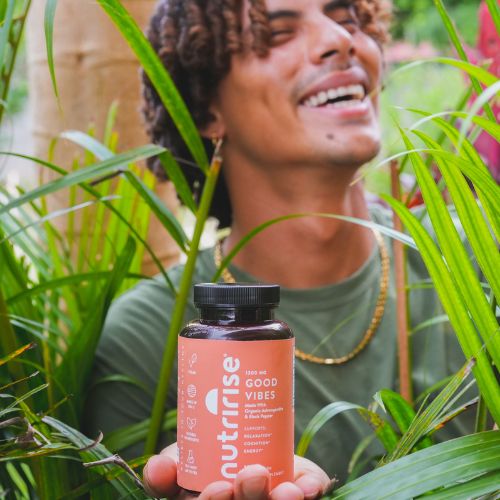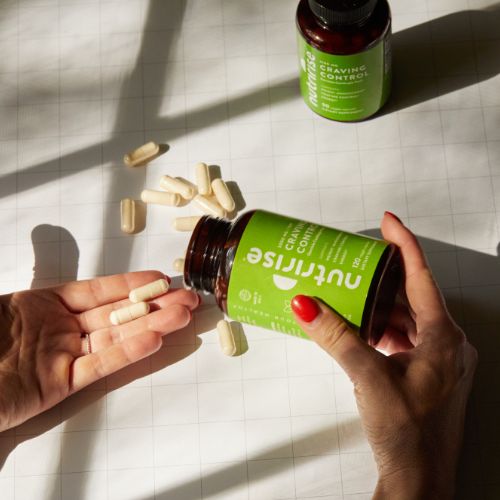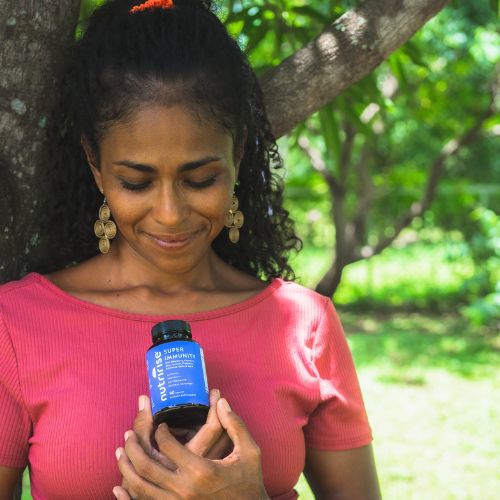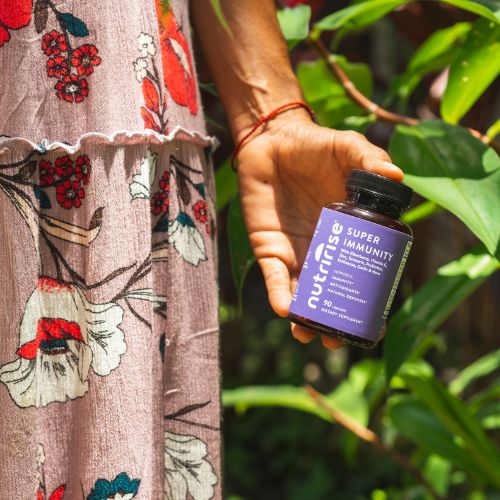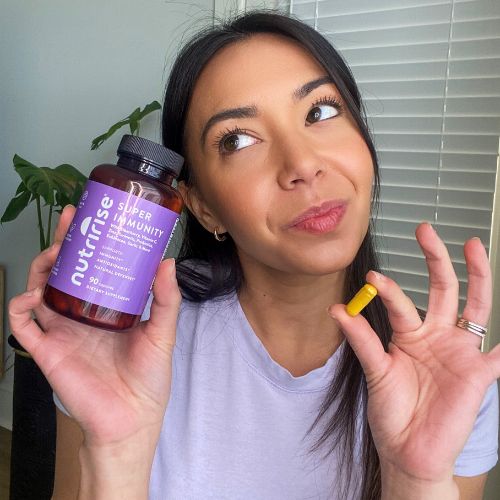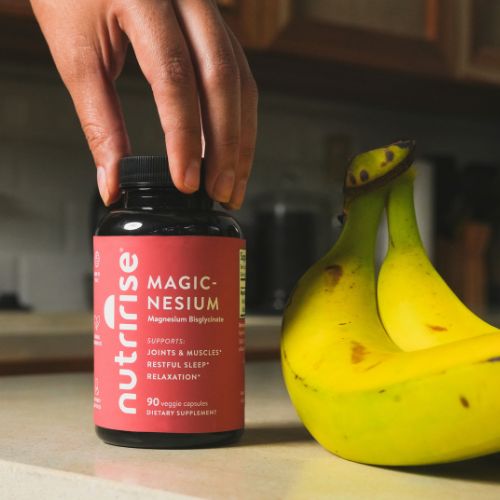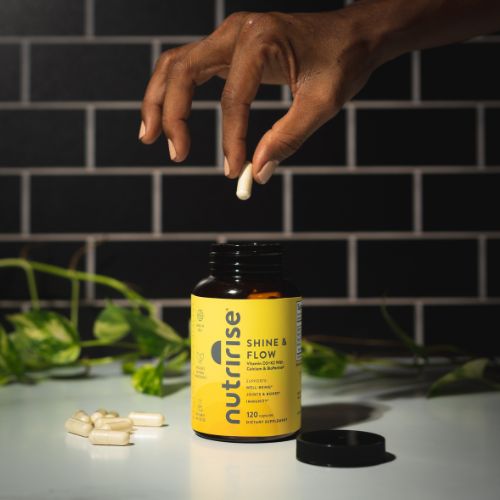What are withanolides?
In the early 1960s, researchers discovered the first withanolide, called Withaferin A (1). It was isolated from Ashwagandha leaves by two Israeli chemists - Asher Lavie and David Yarden.
This withanolide is present in the leaves and the plant's roots,
Since then, scientists have discovered over 900 naturally occurring molecules (2). Other notable withanolides in Ashwagandha include Withanone, Withanolide A, Withanolide E, Withanoside IV, Sominone, and others.
Sources of withanolides
The plants from the Nightshade family (Solanaceae) are the primary sources of withanolides. It includes about 2700 species, many of which contain these bioactive molecules.
Yet, their concentration is the highest in the species of the genus Withania and, more specifically, Withania somnifera, aka Ashwagandha.
The name of the species - "somni-fera," means "sleep-inducing" in Latin. It is likely due to the powerful adaptogenic properties of the herb.
The term adaptogenic stands for increasing the tolerance of the body to stress. Clinical studies show that daily supplementation with Ashwagandha powder significantly reduces stress, cortisol levels and feelings of anxiety, and depression (3).
On the other hand, the name "ashwa-gandha" comes from Sanskrit and stands for "horse-smell." It describes the plant's root, which has a strong horse-like odor.
The benefits known by Ayurvedic practitioners for thousands of years are now widely studied and supported by researchers.
Besides being considered an adaptogen, clinical trials report that an Ashwagandha dietary supplement may also benefit thyroid function, sexual health, and physical performance (4, 5, 6).
Structure of withanolides

Chemically, withanolides are steroidal lactones. Part of their structure is steroid rings connected to another carbon ring called a lactone, which ultimately forms a steroidal lactone.
Ashwagandha doesn't possess any of the typical side effects of performance-enhancing substances. Furthermore, the various withanolides often have different properties despite the similarities in their structures.
For example, withaferin A has powerful cytotoxic effects, which means in vitro studies show it induces the death of specific cells - usually bacterial and malignant cells (7, 8, 9, 10).
On the other hand, Withanoside IV may lower cortisol and stress levels, while Withanone increases the lifespan of healthy cells.
How do withanolides work?
Withanolides' are potent compounds that can exert strong effects on cells.
Withaferin A
The main cytotoxic withanolide is Withaferin A. It is a highly reactive compound, which explains many of its properties.
For example, Withaferin A can destroy a protein called vimentin, which plays a role in forming new blood vessels (angiogenesis) and cell signaling.
Therefore, Withaferin A is currently under extensive research regarding its medicinal potential, but there is a need for more research before they can make any conclusions.
Withanone
Another withanolide with potent cytotoxic activity is Withanone. It blocks the action of 2 proteins called survivin and mortalin (11, 12).
Targeting these proteins is also currently investigated for possible novel medicinal therapies with low toxicity to normal cells. Yet, much more research is needed.
Furthermore, one study reveals that Withanone has beneficial effects on normal cells (13). The laboratory experiment reports that the withanolide increased the lifespan of normal human fibroblasts by 20%.
Furthermore, extracts of Withania somnifera have shown antibacterial activity in several laboratory experiments. According to the scientists, that's likely due to the presence of withanolides, and future research will have to shed even more light on their potential (14, 15).
What are the benefits of withanolides inside your body?
In vivo animal and clinical studies reveal that withanolides exhibit many health benefits inside living organisms.
For example, the role of Ashwagandha in increasing the body's capacity and resistance to stress is due to several active substances in the herb, one of which is Withanoside IV.
Animal studies report that the Withanoside IV successfully abrogates the increase in cortisol levels during chronic stress in mice (16).
Despite Withaferin A's cytotoxic effects, one study reports that this withanolide promotes healing after injury in healthy bone cells and reduces the risk of osteoporosis.
The scientists reported that administering Withaferin A to mice increased new bone formation and bone mineral density (17).
All human clinical trials investigate the effects of whole ashwagandha extracts rather than separate withanolides.
Therefore, the benefits observed can't be attributed to natural withanolide content alone but also to the interactions between the different bioactive substances in the medicinal herb.
With that being said, Ashwagandha root extract was able to reduce symptoms of fatigue and improve the quality of life in 100 chronically ill patients (18).
In another clinical trial, supplementation resulted in a significant reduction in stress and anxiety, combined with 2 kg of weight loss in 12 weeks (19).
The roots may also be effective in lowering blood sugar, total cholesterol, LDL, and triglycerides (20).
Are withanolides safe?
More is not always better, and that is also true for withanolides. Due to the high potency of Withaferin A, it should be dosed carefully. Studies report that high concentrations of Withaferin A can harm red blood cells (21).
Remember that supplementing with Ashwagandha leaf extracts containing high concentrations of Withaferin A should be used only under medical supervision. Ashwagandha supplements, therefore, use only the root extract for safety and efficacy.
It is generally considered safer to supplement with root extracts only because they contain lower amounts of Withaferin A. Experiments have shown that Ashwagandha root has no toxicity in animals, even at higher doses (22).
Taking too much of an Ashwagandha root powder supplement may cause only minor digestive problems, including upset stomach, vomiting, and diarrhea. Those are also the most common adverse reactions.
Contraindications against taking ashwagandha include pregnancy, breastfeeding, hyperthyroidism (high levels of thyroid hormone), gastritis, and stomach ulcers. Some studies suggest that the herb can increase the risk of miscarriage in pregnant women (23).
Due to the hypoglycemic effects of the herb, it reduces water retention, which may lead to a transitory increase in urination.
Do not combine with any prescription medications before consulting with your doctor, especially medicines for thyroid conditions, psychiatric disorders, antidiabetics, antihypertensives, and immunosuppressants.
Also, Ashwagandha supplementation should be discontinued at least two weeks before surgery as it might interfere with anesthesia.
What is the best way to take withanolides?
The most natural way to take withanolides is by taking Ashwagandha. One can consume the herb as a tea, powder, or supplement.
Although there are numerous options, the safest way is to use an Ashwagandha supplement to ensure that you are taking an optimal amount of these bioactive compounds for ultimate stress relief.
Withaferin A may also have side effects at higher concentrations due to its potent cytotoxic effects, so selecting a supplement that contains only the roots is essential.
NutriRise Ashwagandha capsules contain only the roots of the ashwagandha plant and provide an optimal withanolide content to naturally relieve stress and anxiety. Thanks to a specialized extraction process, it delivers a high potency concentrated extract of certified organic Withania somnifera from 100% natural, sustainable sources.
The supplement can provide you with up to 1950 mg of organic Ashwagandha per dose. But NutriRise takes Ashwagandha supplements one step further by adding up to 15 mg of black pepper extract per serving.
The extract contains piperine, which boosts the absorption and bioavailability of supplements. Moreover, black pepper extract helps fight oxidative stress and protect biomolecules thanks to its antioxidant activities.
The rigorous 3rd party testing also guarantees that NutriRise Ashwagandha is free of binders, fillers, allergens, GMOs, pesticides, dairy, gluten, artificial colors, flavors, hormones, heavy metals, and preservatives. It is also vegetarian/vegan-friendly.
The supplement should be taken daily, combined with meals, for better absorption and maximum effectiveness.
If you prefer gummy supplements, our Ashwagandha gummies are also an excellent choice with additional active ingredients like Vitamin D and Zinc for immune health and overall wellness.
To learn about more Ashwagandha benefits from an herbalist, head on over here.
Note: This article is for informational purposes only, and not intended for use as medical advice. Always consult your healthcare provider before starting any herbal supplements or dietary supplement.








